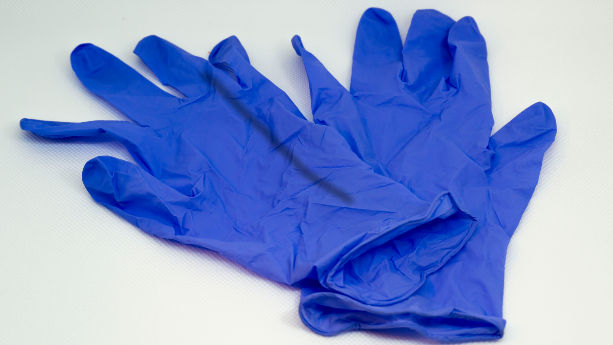
The Medical Devices Regulation covers both products that have a medical purpose, and products without an intended medical purpose – for example coloured non-corrective contact lenses. Additionally, medical devices are divided into different classes, according the risk level. Hence, the requirements vary depending on the class of the device.
It is therefore important to understand if your product is covered by the Medical Devices Regulation and, if so, under which class it belongs.
In this guide, we list examples of products covered by regulation, ordering them by type (e.g. invasive devices), and class (e.g. Class I).
Product List Creation Methodology
1. The product examples listed in this guide are taken from section “4.2 General explanation of rules/practical issues/examples” of the “Guidance on classification of medical devices” that is available on this Guidance page.
a. The product categories listed in this guide (e.g. Non-invasive devices) are taken from the headlines and sub-headlines available in section 4.2.
b. The product examples (e.g. wheelchair) are taken from the tables available in section 4.2.
c. We have sorted the products by class of medical devices (I, IIa, IIb, III), according to the information that is provided in the tables available in section 4.2.
2. The last section of this guide (Groups of products without an intended medical purpose) is an exception.
In this case, we have taken the product examples (e.g. Short-term use coloured non-corrective contact lenses) from section “4 Classification” of the “Guidance on qualification and classification of Annex XVI products – A guide for manufacturers and notified bodies” that is available on the Guidance page linked above.In
this case, the products are sorted by class, according to the information available in section 4 of the document.
3. Note that the list below is not exhaustive and only provides examples. You can consult the guidance documents for more information.
Content Overview

FREE CONSULTATION CALL (US, EU & UK)
- Request a free 30-minute call with Ivan Malloci to learn how we can help you with:
- Find product requirements
- Certification and labeling
- Lab testing
What is the definition of a Medical Device?
A ‘medical device’ is defined as an article intended for human beings for specific medical purposes contained in Article 2(1) of the Medical Devices Regulation. This includes purposes such as diagnosis, prevention, monitoring, and treatment.
A medical device can be any of the following items that are intended for the covered medical purposes:
- Instrument
- Apparatus
- Appliance
- Software
- Implant
- Reagent
- Material
- Other article
Below we list various products that are covered by the Medical Devices Regulation, grouped according to their characteristics (e.g. non-invasive devices) and their class (e.g. Class I).
Note that the regulation classifies devices into four classes:
- Class I
- Class IIa
- Class IIb
- Class II
Some of the requirements of the regulation, such as the conformity assessment procedure, vary according to the different device class.
Non-invasive devices
Class I
Devices that do not come in direct contact with the patient or only come in contact with intact skin are class I devices. Such products include the following:
- Hospital beds
- Patient hoists
- Walking aids,
- Wheelchairs
- Stretchers
- Dental patient chairs
Some devices that come into contact with injured skin or mucous membranes are also classified as class I devices. Here are examples of such products:
- Absorbent pads
- Island dressings
- Cotton wool,
- Wound strips
- Adhesive bandages
Class IIa
Non-invasive devices intended for channelling or storing blood, body liquids, cells or tissues, liquids or gases are classified as class IIa. Examples of such products include:
- Syringes for infusion pumps
- Devices intended to channel blood
- Fridges/freezers specifically intended for storing blood, tissues etc
- Tubings/blood lines for extracorporeal treatment
Devices that modify the biological or chemical composition of human tissues or cells, blood, or other liquids by treatment (e.g. filtration) are also classed as IIa devices. Products with the following functions would be covered:
- Particulate filtration of blood in an extracorporeal circulation system
- Centrifugation of blood to prepare it for transfusion or autotransfusion
- Removal of carbon dioxide from the blood and/or adding oxygen
- Warming or cooling the blood in an extracorporeal circulation system
Class IIb
Blood bags used for channelling or storing for eventual administration are considered to be a Class IIb device.
Non-invasive devices that modify the biological or chemical composition of human tissues or cells, blood, or other liquids intended for implantation or administration into a human body are classified as class IIb. Product examples for such devices include:
- Devices intended to remove undesirable substances out of the blood
- Devices intended to separate cells by physical means
- Haemodialysis concentrates
Class III
Non-invasive devices consisting of substances intended to be used in vitro in direct contact with human cells, tissues or organs are classified as class III. Examples of such products include:
- Substances or mixture of substances for transport, perfusion, and storage of organs intended for transplantation
- IVF or ART products without principal pharmacological/metabolic action
- IVF cell media without human albumin
Invasive devices (body orifices)
Class I
Devices for body orifices that do not connect to an active device (unless it is a Class I active device) are classified as Class I if:
a. They are intended for transient use (<60 min), or
b. are used in the oral cavity (up till the pharynx), in an ear canal up to the ear drum or in the nasal cavity.
Here are some examples of such products:
- Handheld mirrors used in dentistry
- Dental impression materials
- Impression trays
- Examination gloves
- Removable or fixed dental prostheses
Class IIa
Devices for body orifices are classified as Class IIa devices if they:
a. are designed for short-term use (i.e. continuous use for between 60 minutes and 30 days), or
b. are used in the oral cavity as far as the pharynx, in an ear canal up to the ear drum or in the nasal cavity.
Product examples include:
- Short-term corrective contact lenses
- Tracheal tubes
- Orthodontic wires
- Fixed dental prostheses
Class IIb
If the device is designed for long-term use (i.e. continuous use for more than 30 days), it would be classified as a Class IIb device. Such devices include:
- Urethral stents
- Long-term corrective contact lenses
- Tracheal cannulae for tracheostoma for long-term use
- Urinary catheters intended for long-term use
Surgical invasive devices
Class I
Surgically invasive devices intended for transient use which are reusable surgical instruments are classified as Class I devices. Product examples include the following:
- Scalpels and scalpel handles
- Reamers
- Drill bits
- Sternum retractors for transient use
- Dental Osteotomes
Class IIa
Surgical invasive devices for transient use or short-term use are generally seen as Class IIa devices. Surgical devices intended to be placed on the teeth for the long term would also fall under this category. Products include:
- Needles or syringes
- Surgical gloves
- Clamps
- Skin closure devices
- Bridges and crowns
Class IIb
Most Class IIb devices are implantable devices and long-term surgically invasive devices. Product examples include:
- Vascular closure devices
- Haemostatic foams
- Intra-ocular lenses
- Peripheral vascular grafts and stents
Class III
Devices that have a biological effect or are absorbed, are active implantable devices or have direct contact with the heart, the central circulatory system or the central nervous system would be classified as Class III devices. Product examples include:
- Prosthetic heart valves
- Central vascular catheters for long-term use
- Spinal stents
- Long term absorbable sutures
- Implantable cardiac pacemakers
Active devices for diagnosis and monitoring
Class I
The following devices intended to illuminate the patient’s body, in the visible spectrum are categorized as Class I devices:
- Examination lamps
- Surgical microscopes intended to illuminate the
- patient’s body in the visible spectrum
- Dermatoscopes with integrated light sources
Class IIa
Some active devices intended for diagnosis and monitoring are classified as class IIa devices. This includes:
- Magnetic resonance equipment
- Gamma cameras
- Electronic thermometers
- Electronic stethoscopes
- Electronic blood pressure measuring equipment
Class IIb
Examples of Class IIb devices would include those that are designed for the monitoring of vital physiological parameters or are active devices intended to emit ionizing radiation and intended for diagnostic or therapeutic radiology:
- Blood gas analysers used in open heart surgery
- Apnoea monitors
- Diagnostic X-Ray machine
- Computed Tomography Devices
Disinfecting, cleaning, rinsing, hydrating or sterilising devices
Class IIa
The following are examples of class IIa devices designed for disinfecting or sterilising medical devices:
- Disinfecting solutions specifically intended for non-invasive medical devices
- Washer-disinfectors intended specifically for disinfecting non-invasive medical devices
- Sterilisers intended to sterilise medical devices in a medical environment
Class IIb
Disinfecting, cleaning, rinsing, hydrating or sterilising devices used for contact lenses or for disinfecting invasive devices are classified as Class IIb devices. Product examples include:
- Contact lens storing solutions
- Cleaners for contact lenses
- Ultraviolet, vibration, or ultrasonic devices for cleaning and disinfecting contact lenses
- Denture disinfecting products
- Solutions/disinfectors for trans oesophageal ultrasound probes
Groups of products without an intended medical purpose
The Medical Devices Regulation also covers some products that do not have an intended medical purpose.
Class I
Products which are used to reduce, remove or destroy adipose tissue and which are non-invasive would be classified as Class I devices. Here are some examples:
- Connecting tubes
- Cannulas (reusable)
Class IIa
The following are examples of products classified as Class IIa devices:
- IPL/LED/Laser equipment for hair removal only
- Short-term use coloured non-corrective contact lenses
Class IIb
Here are some examples of products classified as Class IIb devices:
- Long-term use coloured non-corrective contact lenses
- Laser equipment for hair removal
- Suction pumps
- Permanent dermal fillers
- Gluteal implants
Class III
In this section, we provide some examples products classified as Class III devices::
- Resorbable dermal fillers
- Absorbable threads
- Equipment for transcranial electrical stimulation to enhance cognitive performance
- Breast implants
- Surgical meshes for breast lifting



















